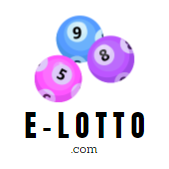E-Lotto Explains: Jackpot Cash Value vs. Annuity | What You Need to Know
Winning the lottery is a dream many people share, but when that dream comes true, you face a crucial decision: how to receive your prize. If you win a Mega Millions® jackpot, you’ll need to choose between two payout options: cash value or annuity payments. While this may seem straightforward, many winners don’t fully understand how each option works or the long-term implications of their choice. Let’s take a closer look, using Mega Millions as an example, to help you make an informed decision.
The annuity option is designed to provide long-term financial security by spreading out your prize over 30 years. This consists of one immediate payment, followed by 29 annual payments that increase by 5% each year. For example, if the jackpot is $100 million, your first payment might be around $1.5 million, and by the final payment, you could be receiving about $6.2 million annually. The 5% increase is intended to protect your purchasing power against inflation, ensuring that you can maintain your lifestyle as the cost of living rises. The annuity option is ideal for those who want stability and may need help managing a large amount of money over time.
On the other hand, the cash option gives you immediate access to a lump sum, which is the total cash value of the jackpot at the time of the win. This amount is usually much smaller than the advertised jackpot because the jackpot is based on the full amount that would be paid out over 30 years with the annuity option. For instance, a $100 million jackpot might have a cash value of around $60 million. The lump sum is essentially the present value of the prize pool, and the lottery invests that money to fund the annuity payments over time. The cash option provides instant access to the prize, but it requires careful financial management to ensure the money lasts.
Many people don’t realize the cash value is smaller than the advertised jackpot, often because they don’t fully understand how lottery prizes work. The advertised jackpot represents the total prize when paid out over 30 years. When you choose the cash option, you receive only the current value of that prize pool, which explains why the amount is significantly lower. The choice between cash and annuity depends largely on your personal financial situation and long-term goals. If you need money immediately or prefer to handle your finances yourself, the cash option might be a better fit. However, if you’re looking for long-term financial security and want to avoid the temptation of spending it all at once, the annuity option offers a stable, growing income over 30 years.
It’s important to note that both options are subject to taxes. Federal taxes are deducted upfront, and depending on where you live, state taxes may also apply. With the annuity option, taxes are taken from each annual payment, while with the cash option, taxes are deducted from the lump sum. Because taxes can significantly impact the total amount you receive, it’s a good idea to consult with financial professionals before making a decision.
Choosing between the cash value and annuity options for a Mega Millions jackpot is a critical financial decision that can have long-term consequences. The cash option provides immediate access to your winnings but requires careful planning to manage the money wisely. The annuity option offers long-term stability, with payments that increase over time to account for inflation. While each option has its pros and cons, the key is to carefully consider your financial needs, goals, and how comfortable you are managing a large sum of money. Winning the lottery is just the beginning—how you handle that win will determine your financial future.
FAQ: E-Lotto Explains: Jackpot Cash Value vs. Annuity
- What are the payout options if I win the Mega Millions jackpot?
You can choose between two payout options: cash value (a lump sum) or annuity payments over 30 years. - What is the annuity option?
The annuity option gives you one immediate payment followed by 29 annual payments, with each payment increasing by 5% to account for inflation. - What is the cash option?
The cash option provides a one-time lump sum payment of the total cash in the jackpot prize pool, which is usually smaller than the advertised jackpot. - Why is the cash value smaller than the advertised jackpot?
The advertised jackpot is based on the amount paid over 30 years in annuity payments. The cash option is the current value of the prize pool, not the total future payments. - How does the 5% increase in annuity payments work?
Each annuity payment grows by 5% annually to help maintain your purchasing power during inflation and ensure long-term financial stability. - Which option provides more financial security?
The annuity option provides more long-term financial security, as it spreads payments over 30 years and helps prevent the risk of spending all your winnings too quickly. - Why might someone choose the cash option?
Some winners prefer the cash option because they want immediate access to their full prize and prefer to manage their finances independently. - Are taxes applied to both options?
Yes, both the cash and annuity options are subject to federal and state taxes. With annuity payments, taxes are taken annually, while the cash option has taxes deducted from the lump sum. - Can the choice between cash and annuity affect how much I take home?
Yes, because of the tax implications and how the prize is distributed, the option you choose can impact how much money you have available in the short and long term. - Which option is better?
There’s no definitive answer—it depends on your personal financial situation, goals, and how comfortable you are managing large sums of money over time. Consulting with financial advisors is recommended.



